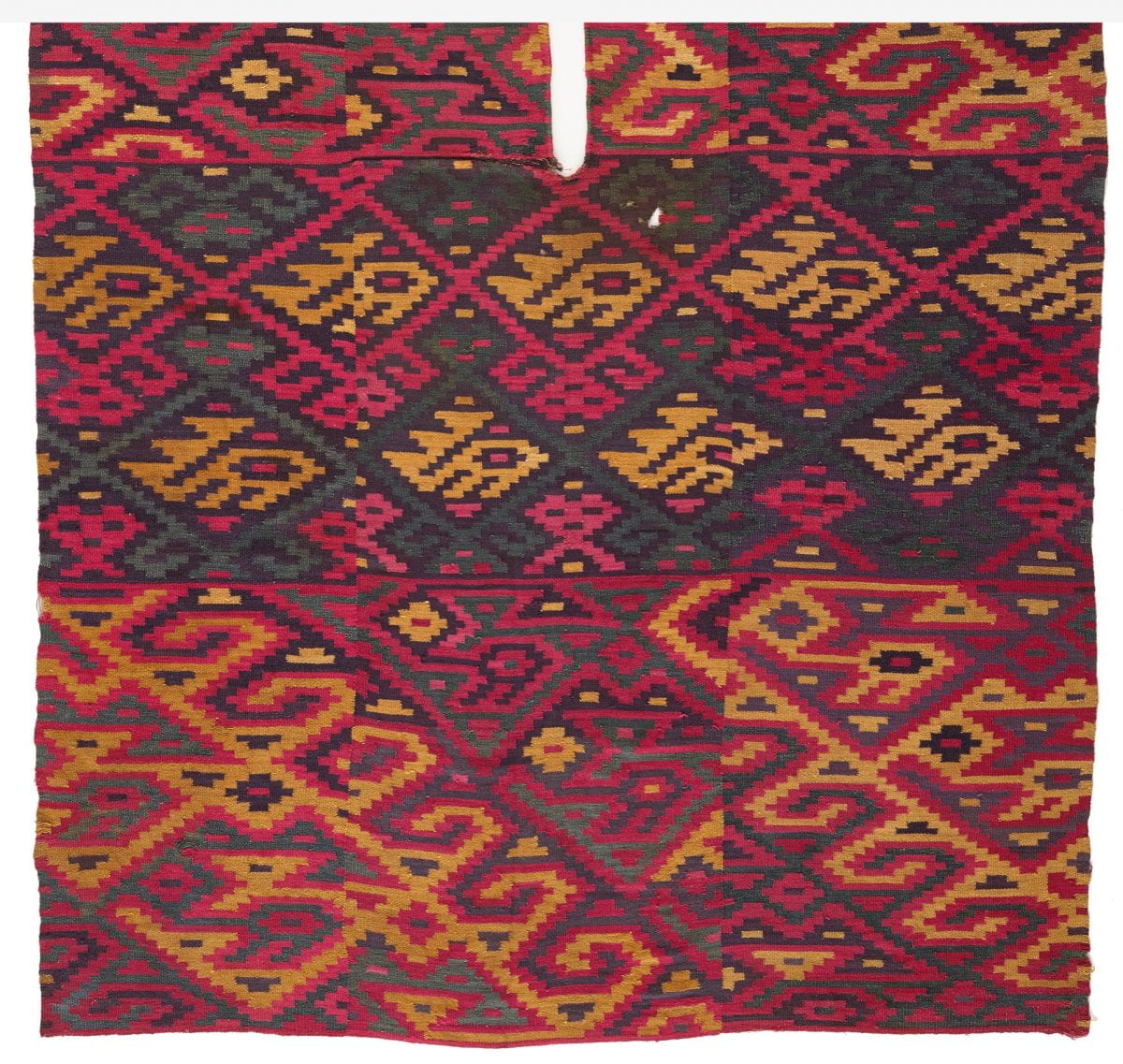Sixteenth-century Spanish conquerors were interested in the mineral wealth of the Andes, but the Incas valued fine textiles more highly than silver or gold. The arid southern coast of Peru is rich in Incan burial sites, and we believe this man’s poncho was found in one of them.
Made of native cotton fibers and camelid hair, and dyed in vivid greens, reds and yellows, this poncho was likely woven for a man of elite status because those of lower rank in Inca society were not permitted to wear fine cloth or brilliant colors. The wool suggests it may have been made for use in the cooler Andean highlands, and the unusual dovetail weave indicates that it may have been traded from another region. Most likely a weaver from a subject people produced this as a tribute or tax to the Inca state.
The complex, repetitive imagery has sparked debate about meaning; perhaps it hints at highly abstracted human heads, felines, snakes and birds. The geometric pattern harks back to earlier Paracas- and Nazca-era textiles. The dyes came from plants, shells, insects or minerals.
Hidden away for centuries in a desert burial mound, this poncho has survived in unusually fine condition thanks to the dry climate and the fact that camelid hair holds dyes very well. This piece attests to the remarkable skills and artistry of the weavers of the Inca Empire — long considered to be among the finest in the Americas.

The coastal desert of southern Peru. Photo by masT3rOD. CC BY-SA 2.0.
